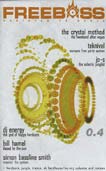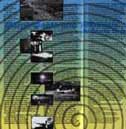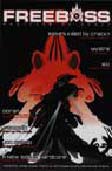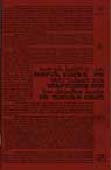|
|
||||
|
|
 
|
|
You are most likely to hear Morph beats at Teknivals. The Sound Systems conspire on a date and location that the event will take place, this is kept secret. All concerned people must respect the secrecy of the location, as the more people that know the location; the more chance there is that something will go wrong. “Loose lips sink ships”. The date is advertised in fanzines, on scraps of paper left at record stores, on various info lines, etc. The Phone number given only will reaffirm that something will take place on that date somewhere, perhaps with a general geographic locale, such as “Northern France”. Usually the unspecified locale is a campground of a National Park or similar venue. The Sound Systems will arrive at the location a few days prior and begin camping as any other normal campers. But these are not your ordinary campers! |
 
|
|
Weaving their way chaotically through the record bins of your local record shop is a new style of electronica. Sometimes these records are shuffled into the Jungle section, the IDM section, the Hardcore section or the House section. Upon listening to these records, you know something is quite different about the sound coming from the record and the genre it is supposed to be associated with. It’s a little more raw, it doesn’t quite conform to the ‘DJ Friendly’ formatting you have come to expect from your vinyl. Oftentimes you end up buying the record not knowing quite what you’ll end up doing with it. It’s just too interesting to ignore. There is definite mystery that needs explained. The label, if it has one, doesn’t seem to help, and questioning your local record store vinyl expert is often met with perplexed looks and mumbling about some ragamuffin unloading a lot of these crazy records from Europe at the shop the other day. If this situation has happened to you, then you just might have stumbled into the weird, wacky world of Morph Beats. Morph Beat is a style that doesn’t really have any hard fast rules. There are no BPM limitations; some records are 120BPM, while some are 250BPM, sometimes on the same record. There are no sound limitations; some tracks sound real gritty and noisy, while some have birds chirping and silly samples. There is a lot of creative freedom in this genre, and people are taking advantage of it. So what ties Morph Beats together? Where are they from? Who makes them? Electronic dance music became segregated into various genres such as trance, house, jungle, hard-core, etc. in the mid-1990’s. The underground electronic scene, most notably in Europe, rebelled against this segregation for the simple reason that it restricts creativity if you must constantly conform to a constantly nar-rowing standard of expectations. After all, it was your freewheel-ing bedroom DJs and producers that made the rave sound what it is today. Because the raves were becoming more commer-cial, there were fewer places to play new music that did not conform to the pre-made expec-tations. To get the new music out, people had to throw parties that were generally cheap or free, and so many of the music makers would produce vinyl of their records and sell them at these events. Many labels were associated with travelling sound systems and they started trading these records with other labels and sound systems, often from a number of different countries, and taking the records back home after the event and selling them to their local record shop. At first, these records were just trickling into the United States, but as the phenomenon grows, it must be identified in some manner. So the situation arises where you must “label” a music that rebels against classification and will quickly mutate anyway. Thus, the term “Morph” was chosen, not only because it was a termthat was always bandied about in the underground scene, but also because it generically describesthe process of ongoing transformation. Morph labels to take notice of would be my own label, Deadly Systems, which was one of the first United States morph labels. In Europe, we would have to mention Praxis Records. Both labels are good starting points as they represent many of the popular sound mutations over the last 7 years; the early catalog representing fast brutal dark hardcore-ish sound, and later morphing into ‘broken beat’ techno, and noizy jungle breakcore, currently. Dj Scud and Aphaisic’s Ambush Records, is a great label to look for all sorts of wild breakcore of different speeds and flavors. In the quirky techno, and broken beat area, there is DJ Controlled Weirdness’s Uneartlhy Records and Dan H. and Hekate Sound System’s frequent imprints New Skin, Hex, and Brachage Records. Audio Illusion Recordings and Coven H. and Zhark are solid trippy electro breaks (oftentimes). On the trancier side of things is the various mysterious imprints often from France, such as Spiral Tribe associated records, Capsule Core, and Explore Toi. For banging techno flavor and more of a dark banging hardcore sound, maybe try Uncivilized World, Epitaph, and Epileptik. Want some spaced out dub at 6am for your mud encrusted sound system? How about the Madness label, or some cuts from High Tone? These label descriptions are just barely scratch-ing the surface of great labes out there, and there will be more to come, that’s for sure. As I said before, most of these labels run the gamut of sounds so it’s hard to sum up their whole cata-log with one generalized description-you have to listen to them yourself! So, next time you are in your local record shop, morph yourself out of the same old restrictive genres and into some crazy new sounds! |

